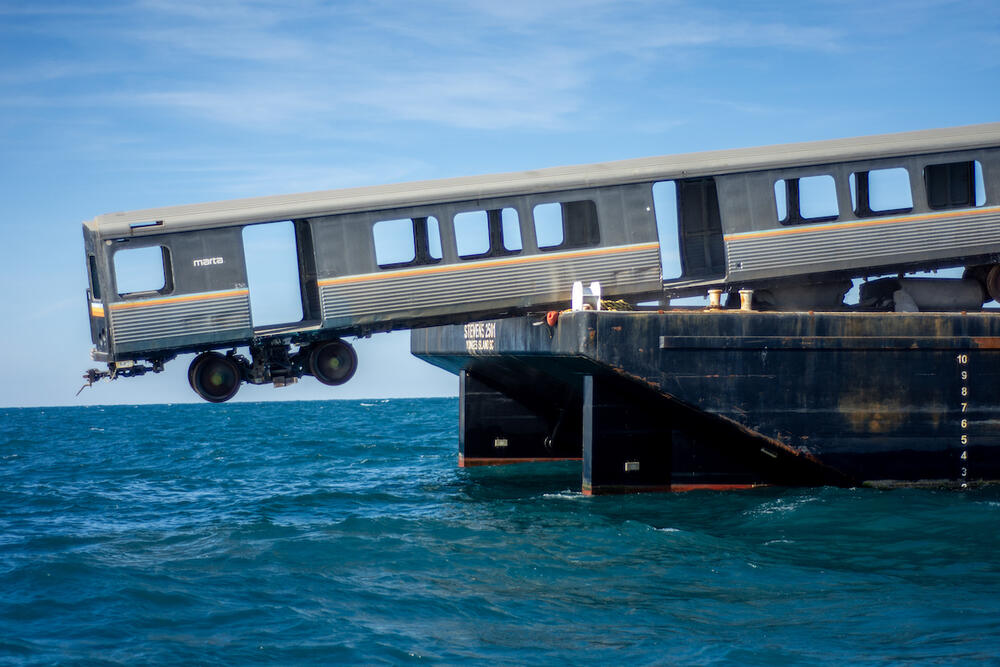
Caption
Concrete materials and retired MARTA railcars are placed at Artificial Reef L about 23 nautical miles east of Ossabaw Island on Thursday, Dec. 21, 2023.
Credit: Georgia Department of Resources Coastal Resources Division
LISTEN: 46 artificial reef sites made from materials such as concrete rubble, metal hulled vessels, and even MARTA rail cars, sit in waters off the Georgia coast. GPB's Devon Zwald reports.

Concrete materials and retired MARTA railcars are placed at Artificial Reef L about 23 nautical miles east of Ossabaw Island on Thursday, Dec. 21, 2023.
In late 2023, the Georgia Department of Natural Resources placed two retired MARTA rail cars in 60 feet of water off the coast of Ossabaw Island. The event splashed into headlines.
The rail cars were the latest addition to one of 46 artificial reefs off Georgia's coast. They're made of materials such as concrete rubble and metal hulled vessels.
A recent study from the University of Georgia's Marine Extension and Sea Grant found that visitors to these sites contributed more than $8 million to the coastal economy in 2023.
The artificial reefs were created to enhance recreational fishing and support marine life habitats, said Eugene Frimpong, Coastal Economics Specialist with UGA Marine Extension and Georgia Sea Grant and principal investigator of the study.
He said the anglers and divers who visit the sites spend money.
"We want to understand the cost of transportation to these reef sites — if they purchase, for example, the fuel, the time that they even travel to these artificial sites," Frimpong said. "We look at the hotel stays, if they spend overnight, how much is spent on hotel."
He said the economic impact isn't calculated only by the direct money spent in these places, but by indirect spending as well.
"So you go there, you spend money to reserve a room; this money that the hotel receives, the hotel also have to use it to, for example, pay for electricity, water, and other inputs," Frimpong said. "And so that ripple effect, or the multiplier, what we call the multiplier effect, is what we are seeing in the indirect."
Further, the hotel would have employees who would spend their paychecks in the economy.
The study was commissioned by the Georgia Department of Natural Resources.
"In order to understand whether the reef program is worth having them, it's important to understand their net benefits and also the economic impact generally," Frimpong said. "And so that motivated the research that we did."
The study also estimated the artificial reef program could grow, generating up to $139 million in net benefits over the next 50 years. And for every $1 spent, the program generates $1.60 to $2.40.